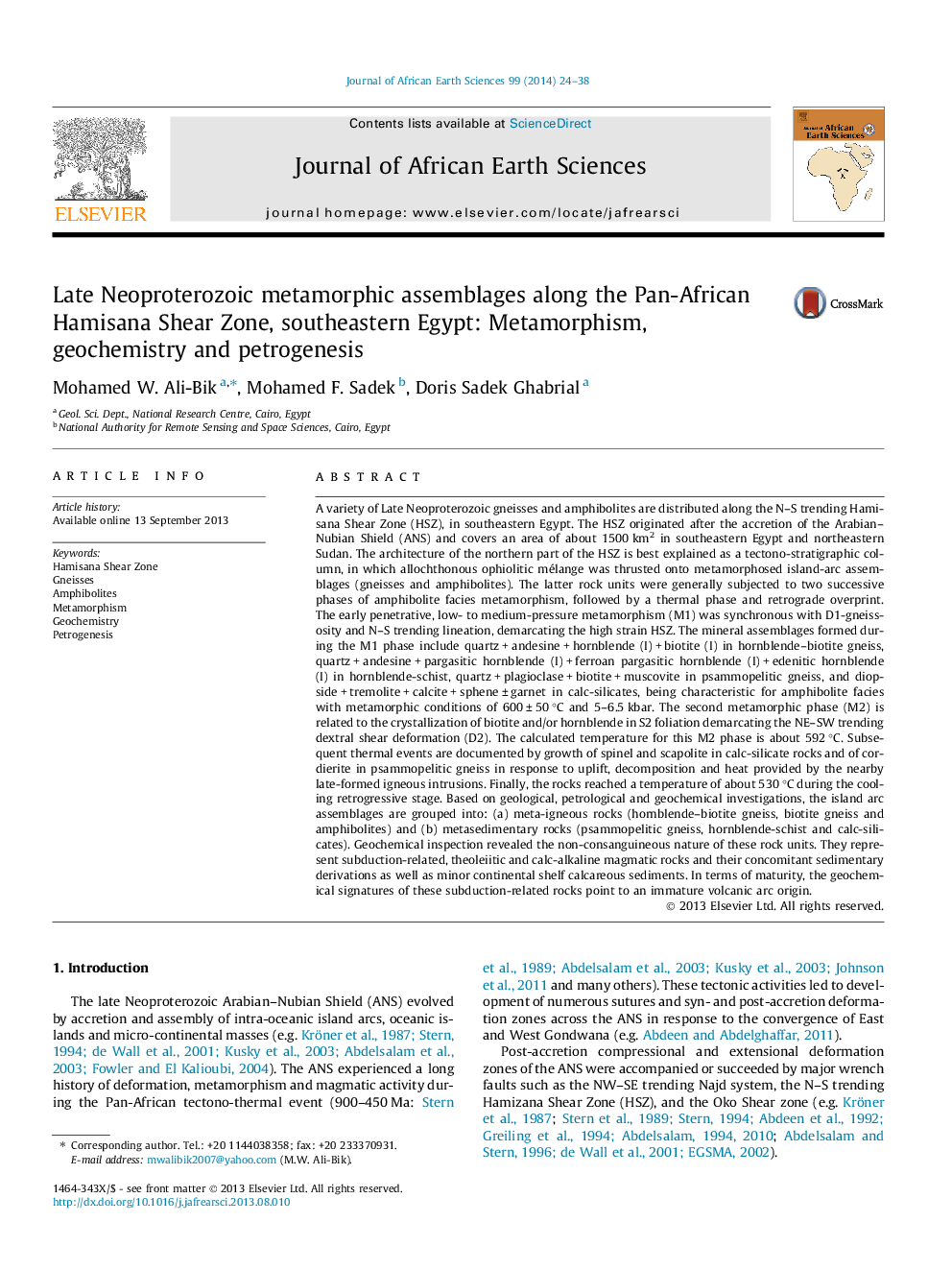| کد مقاله | کد نشریه | سال انتشار | مقاله انگلیسی | نسخه تمام متن |
|---|---|---|---|---|
| 4728800 | 1356471 | 2014 | 15 صفحه PDF | دانلود رایگان |
• We shed light on the post-accretion Hamisana Shear Zone in southern Egypt.
• It is among the largest deformation zones in Arabian–Nubian Shield.
• In the study area, the ophiolitic rocks were thrusted onto island arc assemblages.
• The arc assemblages represent immature subduction-related rocks.
• The island arc assemblages were deformed and metamorphosed under amphibolite facies.
A variety of Late Neoproterozoic gneisses and amphibolites are distributed along the N–S trending Hamisana Shear Zone (HSZ), in southeastern Egypt. The HSZ originated after the accretion of the Arabian–Nubian Shield (ANS) and covers an area of about 1500 km2 in southeastern Egypt and northeastern Sudan. The architecture of the northern part of the HSZ is best explained as a tectono-stratigraphic column, in which allochthonous ophiolitic mélange was thrusted onto metamorphosed island-arc assemblages (gneisses and amphibolites). The latter rock units were generally subjected to two successive phases of amphibolite facies metamorphism, followed by a thermal phase and retrograde overprint. The early penetrative, low- to medium-pressure metamorphism (M1) was synchronous with D1-gneissosity and N–S trending lineation, demarcating the high strain HSZ. The mineral assemblages formed during the M1 phase include quartz + andesine + hornblende (I) + biotite (I) in hornblende–biotite gneiss, quartz + andesine + pargasitic hornblende (I) + ferroan pargasitic hornblende (I) + edenitic hornblende (I) in hornblende-schist, quartz + plagioclase + biotite + muscovite in psammopelitic gneiss, and diopside + tremolite + calcite + sphene ± garnet in calc-silicates, being characteristic for amphibolite facies with metamorphic conditions of 600 ± 50 °C and 5–6.5 kbar. The second metamorphic phase (M2) is related to the crystallization of biotite and/or hornblende in S2 foliation demarcating the NE–SW trending dextral shear deformation (D2). The calculated temperature for this M2 phase is about 592 °C. Subsequent thermal events are documented by growth of spinel and scapolite in calc-silicate rocks and of cordierite in psammopelitic gneiss in response to uplift, decomposition and heat provided by the nearby late-formed igneous intrusions. Finally, the rocks reached a temperature of about 530 °C during the cooling retrogressive stage. Based on geological, petrological and geochemical investigations, the island arc assemblages are grouped into: (a) meta-igneous rocks (hornblende–biotite gneiss, biotite gneiss and amphibolites) and (b) metasedimentary rocks (psammopelitic gneiss, hornblende-schist and calc-silicates). Geochemical inspection revealed the non-consanguineous nature of these rock units. They represent subduction-related, theoleiitic and calc-alkaline magmatic rocks and their concomitant sedimentary derivations as well as minor continental shelf calcareous sediments. In terms of maturity, the geochemical signatures of these subduction-related rocks point to an immature volcanic arc origin.
Journal: Journal of African Earth Sciences - Volume 99, Part 1, November 2014, Pages 24–38
